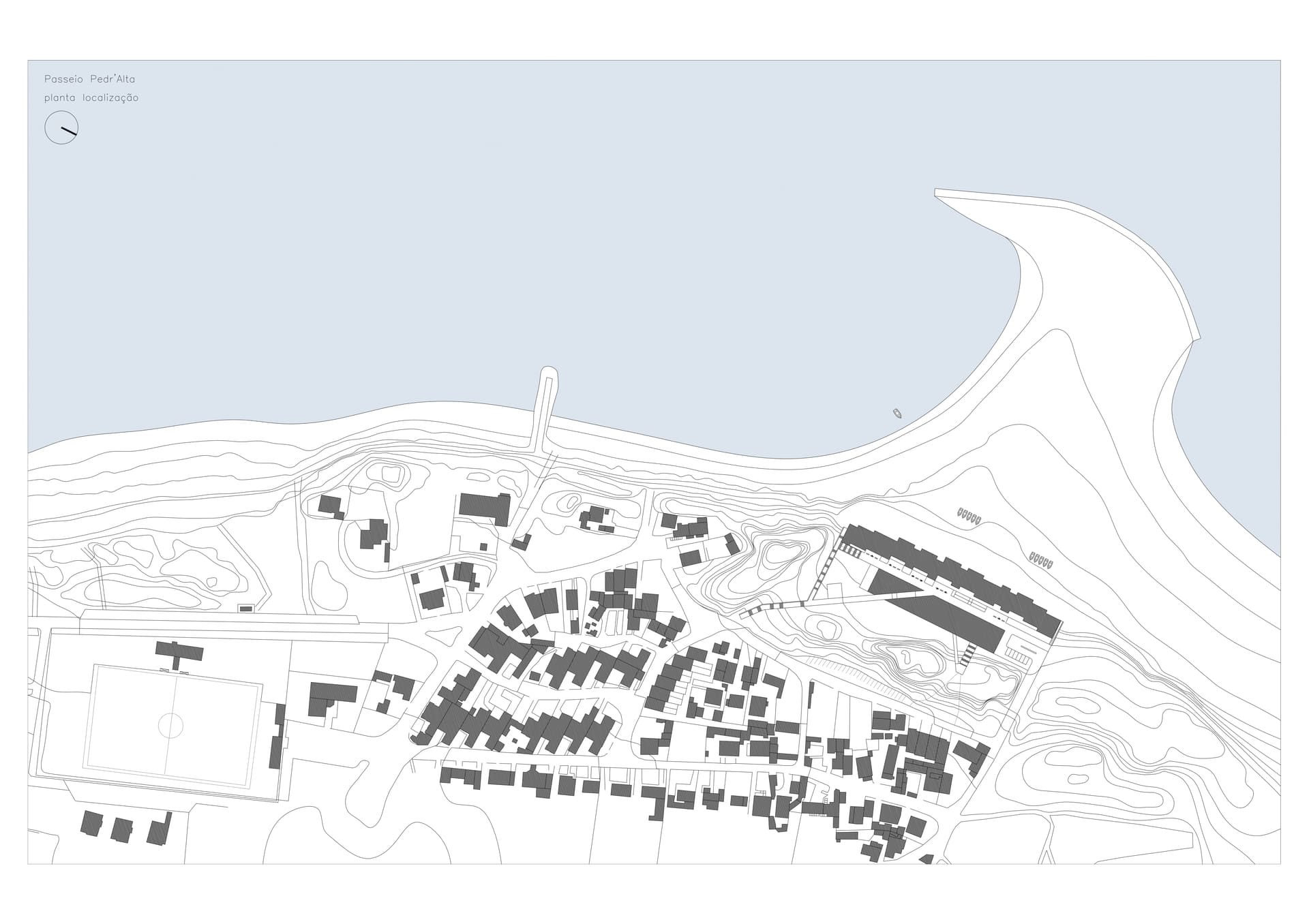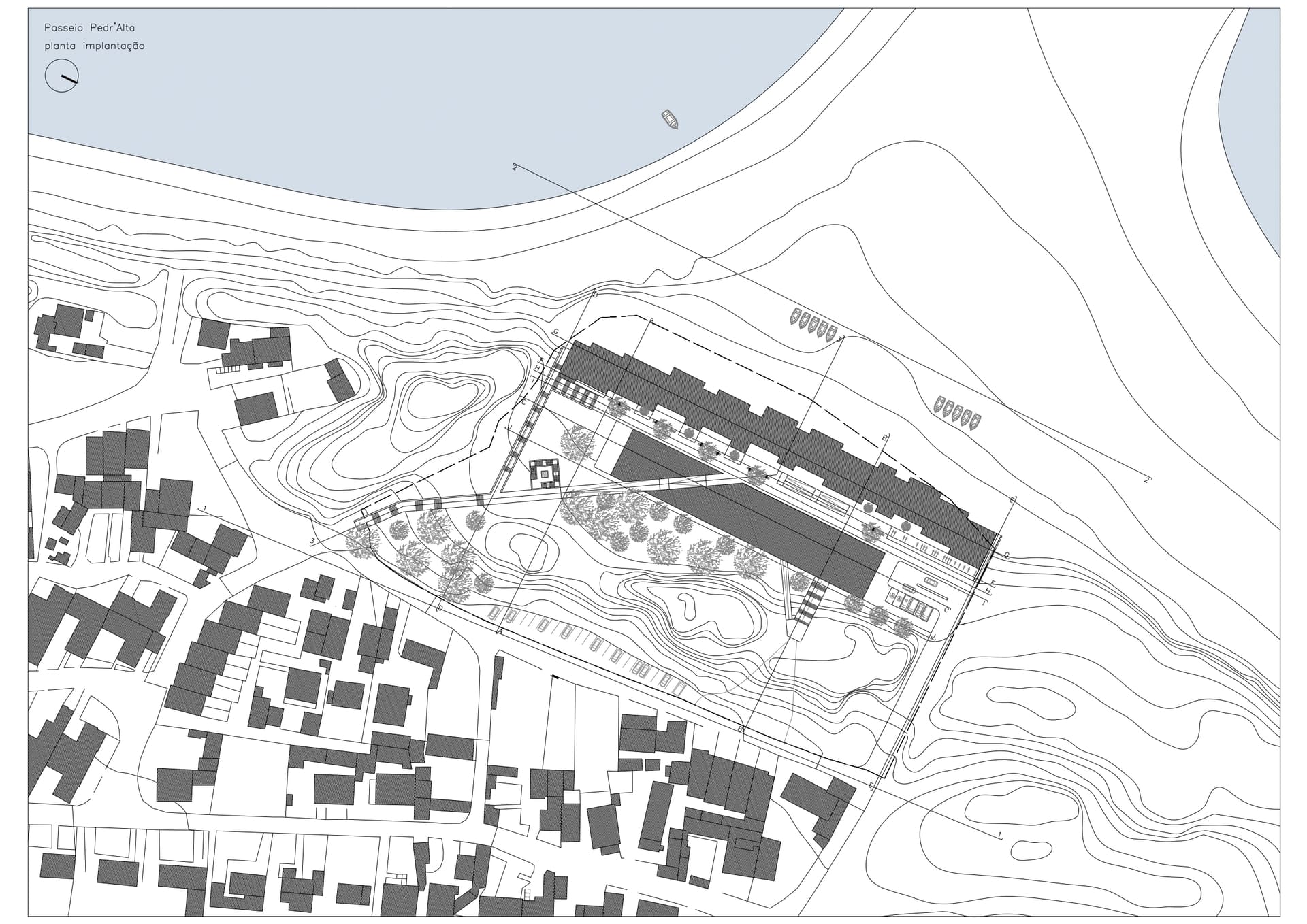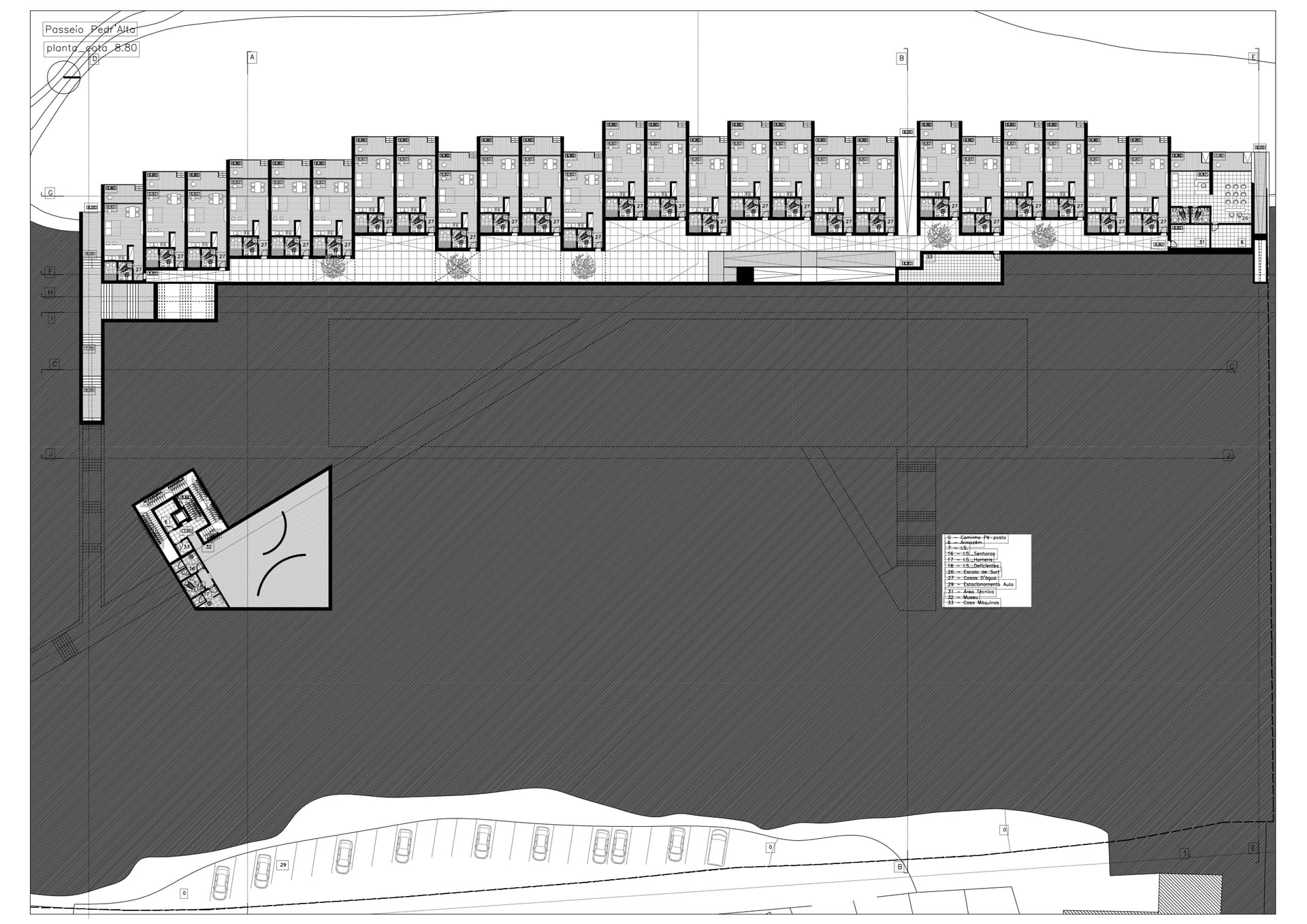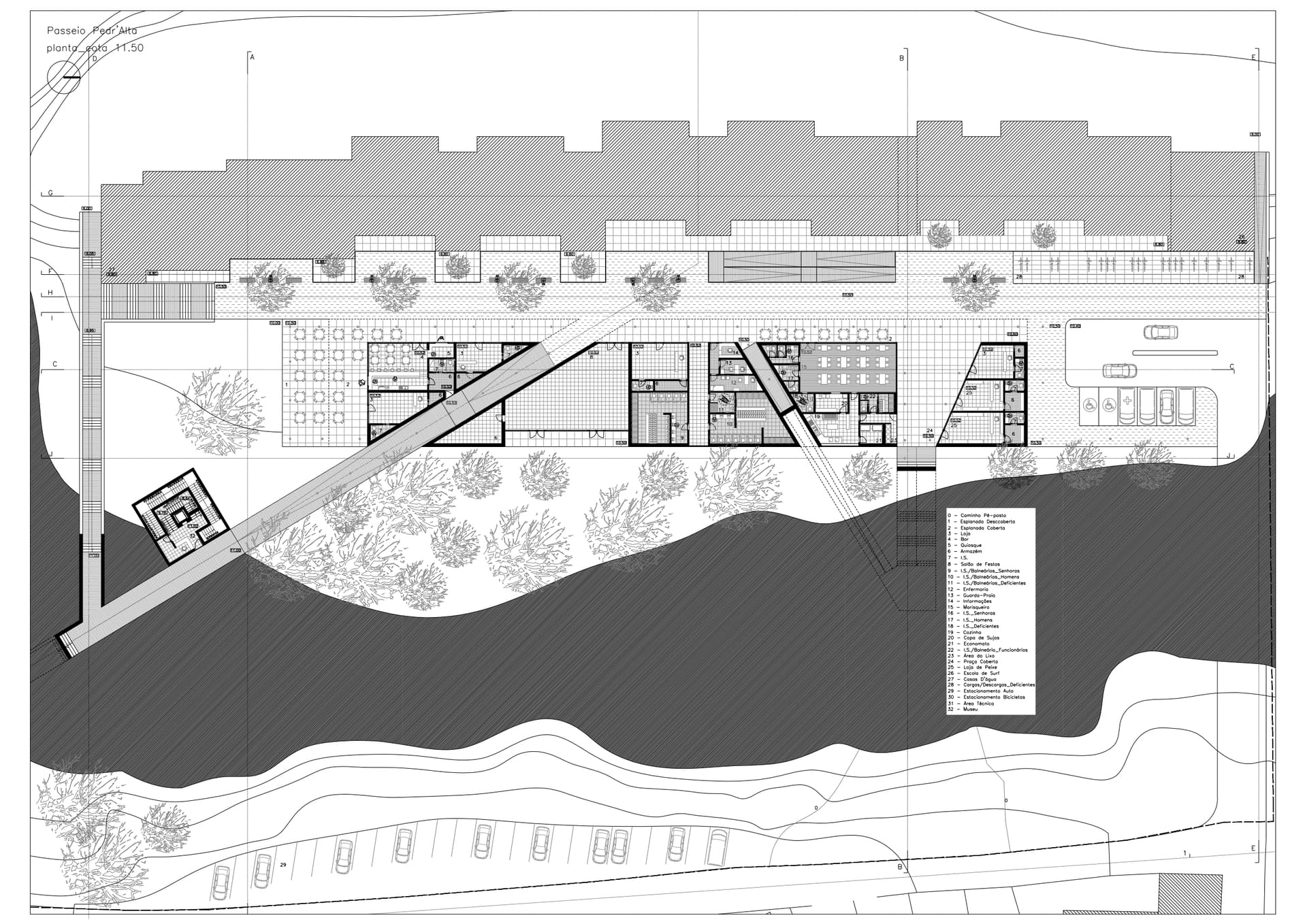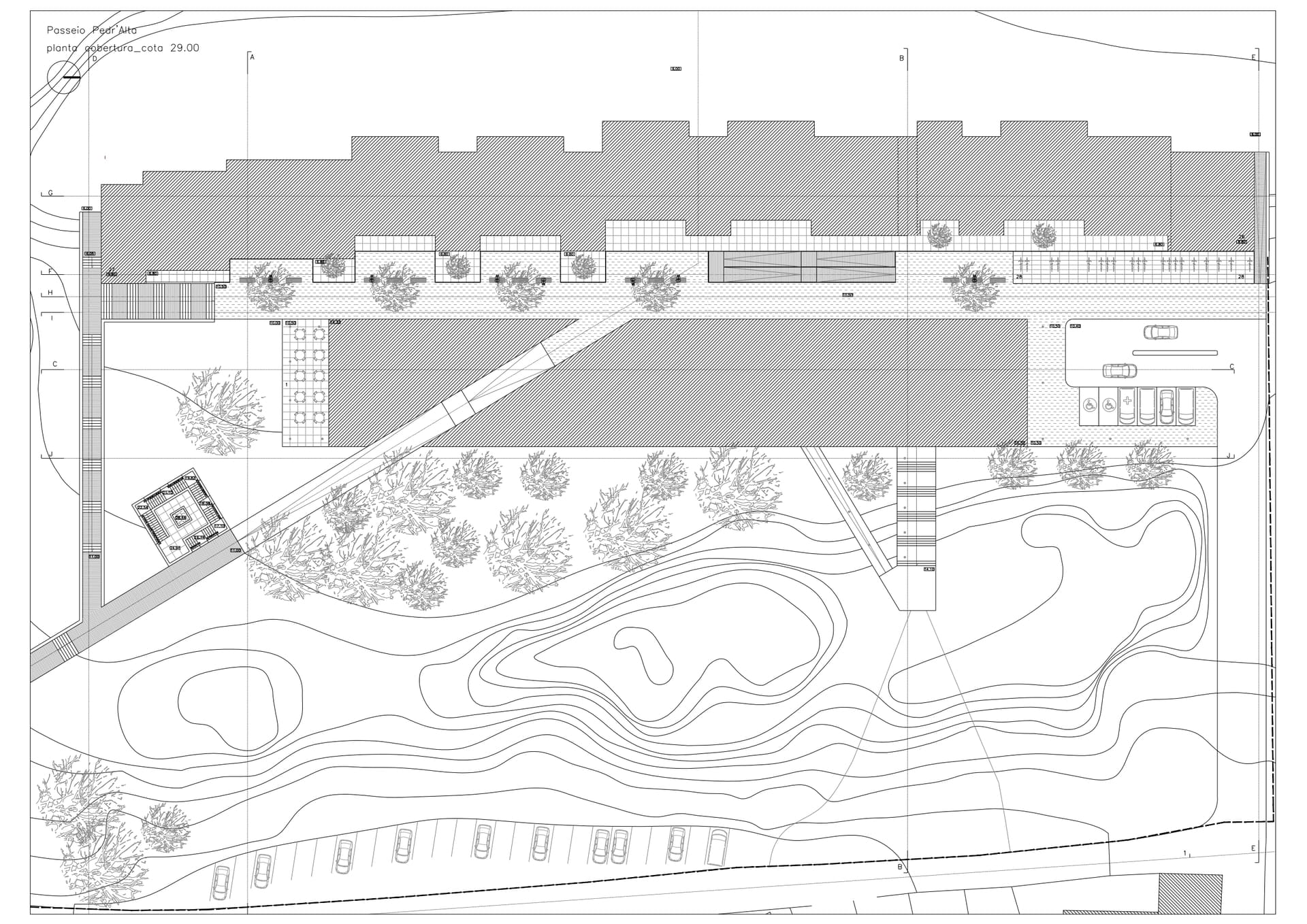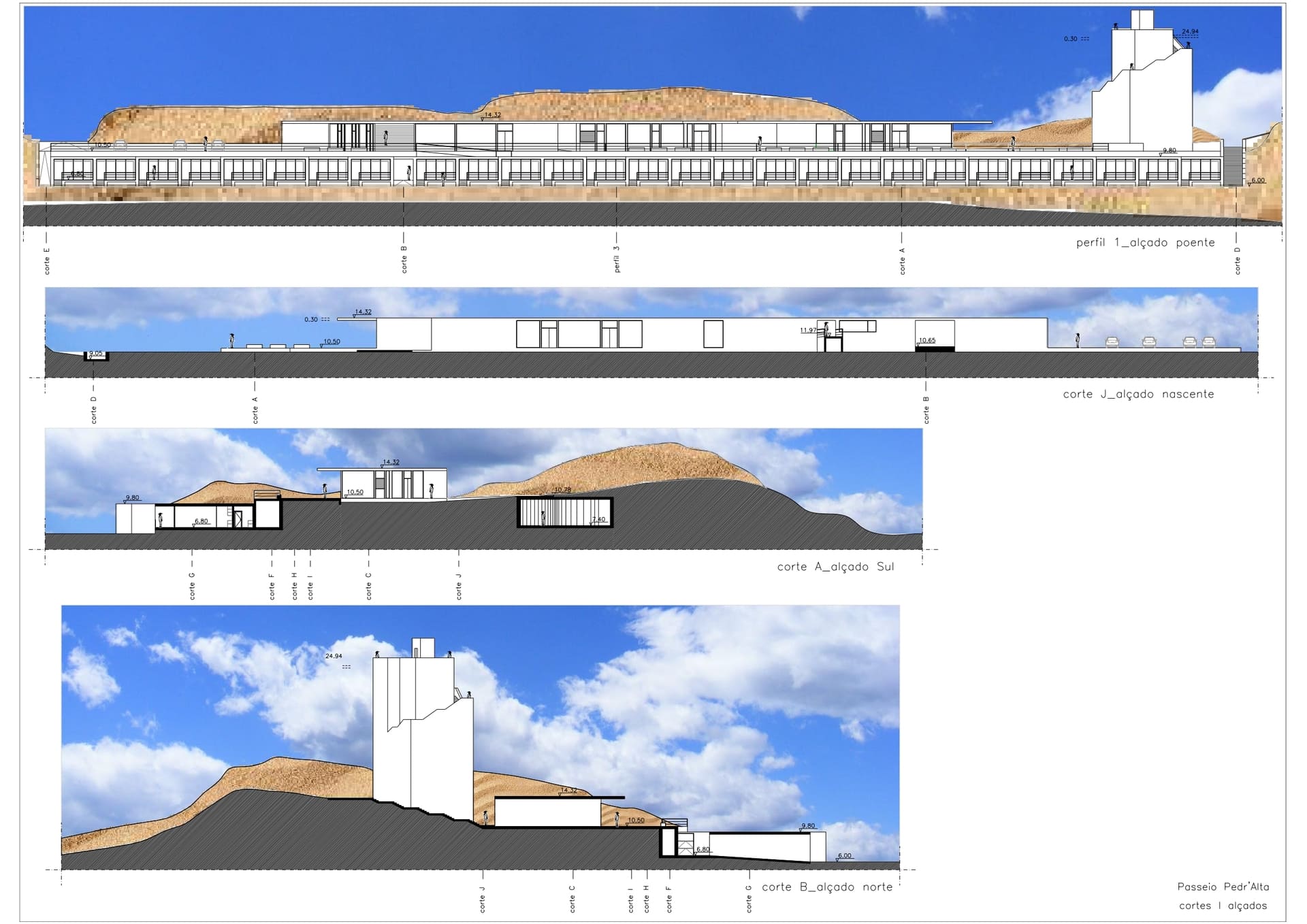Pedr'alva Walking
Descriptive Memory
Based on the strategic location for the execution of the proposed Pedr'Alta Walk, on the west coast more specifically in the town of Pedra Alta and knowing that this is a fishing area that needs a boost to revitalize its economy and quality of life, it chose in this place, prepare a program and the respective project in a silent way that suits both the village and fishermen, visitors and tourists.
As a result of the approach taken to the territory and feeling its strengths and weaknesses, the idea arose to create the Mix Building in a rational and organized way, with its shape and organization being the result of pre-existence, the footpaths, these , which markedly mark the place and its people, or they were not the ones to create them as a result of their needs, since the diversity of the existing topography was seen as an obstacle, but which is actually a border, it is a filter of ways of living. Thus, these routes can be defined as reason-generating elements, with a symbiosis now taking place between these and the new accesses, which in a rational way provide a program, ending up being as or more important than the program itself , it can even be said that these are the program, and that what is left end up being the spaces previously defined as the program.
With regard to its formal design in relation to the Casas D'Água, it should be noted that these were conceived based on the orography and topography of the location and surroundings, so these are an immediate reflection of that. They are T0 typology dwellings that, read as one, reflect the praise of the sea, the horizontality, while in plan they redo and complete the coast, creating a common thread between the surroundings, not being a break, but a continuity.
As far as the Mix Building is concerned, it praises the sea for its horizontality and its transparency, the result of crossing paths that dictate the program and its form. It is a building that is interpreted as one, but in reality it is a sum of the remains of spaces left by the paths. The physical separation that is denoted in the building is caused by the main route, thus tearing it, just as it tore the topography.
Reporting now to the viewpoint and its associated program, the museum, it should be noted that this construction is the exception to the architectural silence in the place, and is at a higher level than the Mix Building and the rest of the program, so that you feel like you are. an antithesis to what one is supposed to observe when climbing a slope, which is the attempt to achieve an unobstructed and unobstructed view. It is clearly sewn to the route, being the meeting point for different routes and uses. Its shape is inspired by the eddies, whether of wind or water, which are felt here with some frequency, or this was not a coastal area of the north coast.
Now entering the field of programmatic distribution, it should be succinctly mentioned that Casas D'Água, being of typology T0, are, as the typology defines, a permeable space, and that therefore it consists of a mixed use area, being this is the living and sleeping area, which has a direct and open connection with the kitchen area.
The Mix Building, which works as a bar, lives from the inside out, that is, the programmatic distribution presents itself as a succession of the entire proposed program, including, among others, the seafood restaurant, shops, fish stores, bar/kiosk and terraces.
As far as the museum is concerned, it is composed of a large space divided by two walls that act as an element of poetic action and thus help to define two types of space, and its complement is the viewpoint consisting of a tower. vertical access made from the outside of the same, thus giving several possible observation points along its ascent, culminating in a space of contemplation and praise of the sea, where it is possible to observe the entire ocean as well as the surrounding surroundings.
